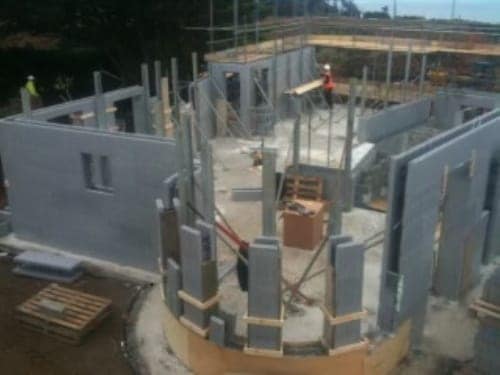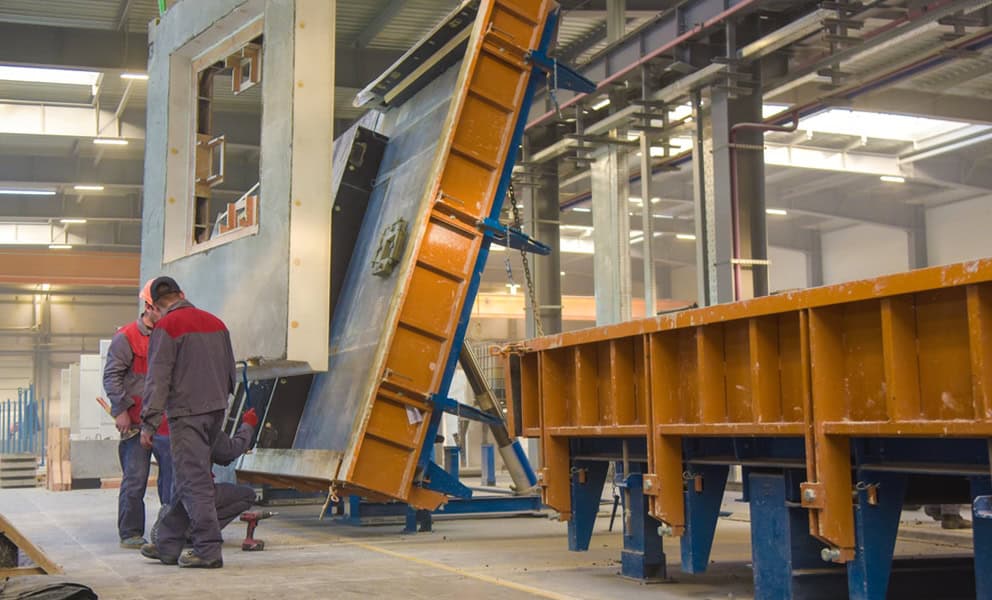
Changes to the building regulations for insulation
The recent changes to the building regulations include new rules on insulation that will affect homebuilders across the UK. If you're not up to speed on what this means for your business, then read on to find out what has changed and why.
We are also going to put a spotlight on AMVIC Insulating Concrete Formwork (ICF) – a modern method of construction that could help you meet the new standards for insulating properties.
What's behind the changes to the building regulations?
Our homes are the biggest contributor to greenhouse gas emissions in the UK, and the government wants us to reduce this by tackling things like how much energy we use.
Most of the carbon dioxide our homes produce comes from our central heating, with the average household pumping out two tonnes of this harmful gas every year.
To reach its target of net zero carbon dioxide emissions by 2050, the government has changed the regulations that govern how homes are built in this country.
Some rules have been updated – and two new parts have been added – and these changes affect everyone from self-builders to large turnover housebuilding companies.
What are the changes to the building regulations?
The changes to the building regulations include updates to:
- Part L (conservation of fuel and power)
- Part P (ventilation)
Additionally, the two new parts that have been added are:
- Part O (overheating)
- Part S (electric vehicle charging)
Under Part L of the building regulations, the requirements for insulating new homes have changed, and the U-values have been updated to reflect this.
A U-value is a measure of how much heat is transferred through a building element, like a wall, floor, roof, etc.
It also affects existing homes where updates are made to things like windows and doors, as this could affect how energy efficient the building is.
When do the changes come into force?
The building regulations officially changed on 15 June 2022. The rule changes were foreshadowed long before this, so building companies and self-builders should have had time to prepare.
The expectation is that builders will adopt the new rules from this date onwards, but there is a grace period for anyone who has already started working on a property.
To qualify for this, you must have:
- submitted your plans before 14 June 2022
- completed the building work by 15 June 2023
If the work isn't completed by the deadline, then the approval for your plans will lapse.
What are the updated U-values for new builds?
The U-values you need to know about differ slightly depending on where you are in the UK and the type of property you're working on – new/existing, domestic/non-domestic.
We suggest using these values as a starting point for new-build properties in England:
| Location | U-Value |
| Wall* | 0.18 |
| Windows | 1.20 |
| Floor | 0.13 |
| Roof | 0.11 |
* The values for walls are different for cavity walls, solid walls, and so on.
Spotlight on: AMVIC insulating concrete formwork
To help you narrow down your search for new materials that meet the required standards, we've put together this spotlight on AMVIC ICF.
Formwork describes something that is used to contain concrete, and in this case, it is a lightweight, polystyrene structure with a hollow centre. It's available in four different widths and two different types of polystyrene.
The pieces fit together without glue or mortar, and concrete is poured into the centre to create an airtight, high-strength wall. Cladding can be applied to the outside, so that it looks like any other structure.
Insulating concrete formwork is suitable for: residential properties
- basements
- large structures
- extensions
- swimming pools
For new and existing homes, the polystyrene structure meets the standards for thermal insulation set out in the updated building regulations.
Homeowners that live in a house with an insulated concrete formwork can expect to enjoy lower heating bills and a reduction in carbon dioxide emissions.
Thermal properties of AMVIC ICF at a glance
- 24 W/m²K in the 280mm (Styropor) system
- 15 W/m²K in the 350mm (Neopor) system
With insulating concrete formwork there is no cold bridging – an area that is specifically addressed in the updated building regulations.
Cold bridging is caused when cold air makes its way into a building from the outside through a thermal conductive element or a gap in insulation.
What are the other benefits to contractors?
AMVIC's concrete formwork is easier to work with than many other types of insulation.
- It's quick and easy to use without skilled tradesmen.
- You can work with it in wet and freezing conditions.
- No lifting tools or extensive equipment is required.
- The polystyrene is easy to chase out for services.
Many of the materials are recyclable so waste is kept to a minimum, which is good news for the contractor and the environment. And because the polystyrene is lightweight, it costs less to transport and, in turn, it produces fewer emissions.
How can Majestic Site Management help you?
As leaders in construction management, we are at the forefront of updates to legislation like the recent changes to the building regulations.
Staying up to speed with these changes is time-consuming, and that's where we come in. Our team of professional site managers and consultants is on-hand to help you stay on the right side of the law.
We offer a range of services, from pre-contract through to delivery, that are designed to make sure you are compliant with health and safety and building regulations.
Changes to the building regulations – the key takeaway
To help the UK reduce its carbon emissions, the government has updated the building regulations. These changes are aimed at improving the energy efficiency of our homes, so we use our central heating less.
For homebuilders, the rules on insulation are arguably one of the biggest changes to the building regulations. Whatever you need to navigate through this period of change, we're on hand to help – contact us today to learn more about our range of services.

With over 30 years’ experience in the construction industry, Lee offers more than just a helping hand to keep your project on track. Majestic Site Management also specialises in site compliance, and health and safety, with a long-list of credentials to prove it. Connect with Lee on LinkedIn >>


